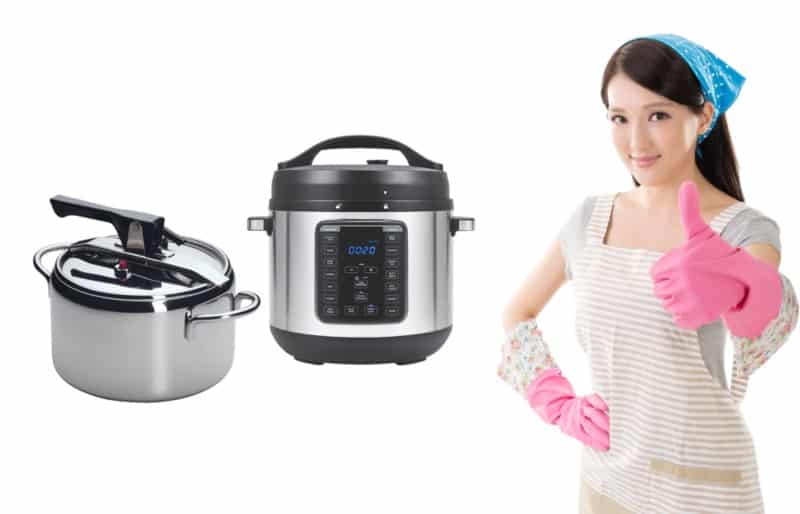
Cleaning A Pressure Cooker
While all pots and pans should be properly cleaned before being used, pressure cookers require several extra steps. It doesn’t matter what size it is and whether or not it’s electric, there are a lot more parts, and not paying attention to them can create serious problems. Cleaning a pressure cooker might be tricky but this article will surely help you get it done!
Rubber ring: Each time the pressure cooker is used, the sealing ring has to be taken out and cleaned. Make sure there is nothing stuck to it and check to see if it is cracked. This ring is what seals the pot so that it can build up pressure. If it’s not clean or if it’s broken, pressure won’t build, the liquid will boil off, and there will be a mess… or worse.
Jets: When it is time for the pressure to be let off, the jets are where the steam comes out. Some foods will clog the jets faster than others, but they should be checked every time. If you still have your manual, follow the directions in it. However, a toothpick is useful in this… so long as you don’t break it off in the jet. Having a clogged jet may end up causing dinner to be overdone.
Under ring: Just like the ring, the area under and around where the ring goes has to be checked. That area, too, can cause a leak. Food particles, bits of rubber and other debris may get into it, especially if it is put into the sink right after use. Other foods from the sink may get into the ring area.
Pressure gauge: Electric pressure cookers don’t really have a pressure gauge, but some on the stove varieties do. Like the jets, these can get food particles and gluey liquids in it, and that will throw the gauge off. It may also prevent it from allowing the pot to seal; steam comes out from under the gauge on these pots. If there is a gauge, follow the directions in the user’s manual. Also, once a year physical gauges need to be recalibrated.
Rim of pot: With some pots and pans being lackadaisical about cleaning the rims and just below on the outside of the pot is survivable. With a pressure cooker, that’s a good way to mess up dinner or create an explosion. Even if there is no visible debris on the rim, wiping it down will remove anything see-through that might prevent a seal.
Inner pot: A lot of busy home cooks ignore the bottom of their pots and pans. It may make them heat less evenly, but it’s not as big of a deal. However, electric ones do have an inner pot, which makes serving and cleans up a lot easier. However, not cleaning the bottom of the pot could create problems in using the electric pressure cookers.
Pressure cookers are wonderful devices. They speed up cooking and can kill bacteria that cause food poisoning. In order to use it properly, the pressure cooker does require a good bit of cleaning and maintenance.
Related Video: